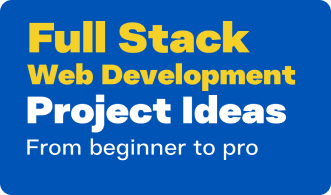In side the article we will learn Red Hat Openshift Interview Question and Answers,
DevOps is fast becoming an integral part of companies across the globe and since OpenShift is a tool widely used for DevOps, it is only obvious that the demand for OpenShift experts in such companies would go up too.
People with promising skills and knowledge in the field of OpenShift are highly valuable to companies at this point.
Thus, it would make sense for you to start your journey in the field of Red Hat OpenShift by getting Red Hat OpenShift training with the finest institute out there, get trained under industry experts and get certified in top certifications as a stamp to your skills.
Since the job prospects for such professionals out there are increasing, we believe that you too must have lined up a few job interviews.An interview works in two ways wherein both your hard skills and your soft skills are put to test.
With this blog, you will get to find out about the top Red Hat OpenShift inquiries questions and replies, all of which will assist you with breaking that meeting and land into the position of your fantasies.
Without beating around the bush any longer, let us dive straight into what you came here looking for:
Top Red Hat OpenShift Interview Questions and Answers List Here
Q1. Name a few features of OpenShift.
Answer. OpenShift is full of features and some of the top ones are:
- Once-click deployment
- Remote application debugging
- Rest API support
- In-built database services
- IDE integration
- Multi-environment support
- Responsive web console
Q2. What do you mean by rolling deployments?
Answer. Rolling deployments include instances of a new version of an application being slowly replaced by instances of a new version of an application.
The dependency of rolling deployments is on the willingness check for new pods prior to scaling down the capacities of an old component. It can be stalled in cases of significant issues.
Q3. Do you know what OpenShift CLI?
Answer. OpenShift CLI is an important tool that helps in managing OpenShift apps from the command line. This tool offers the ability to manage end-to-end application lifecycle.It contains features of both basic and advanced configuration for apps.
Q4. What can you run on OpenShift?
Answer. OpenShift is best fir to run existing Docker images and to define builds to produce new Docker images with the aid of Dockerfile.
Q5. State the benefits of OpenShift origin.
Answer. Some of the benefits are running PaaS locally behind a firewall or on a system. It also helps to expand skills and improve developer competences with PaaS.
Q6. What do you understand by deployment strategies?
Ans. Deployment strategies play an instrument role in upgrading and modifying an application. When applying deployment strategies, modifications cease to require any kind of downtime.
The blue-green deployment strategy is the most commonly found deployment strategy.
Q7. Please explain OpenShift Architecture.
Answer. OpenShift Container Platform is a collection of services and modular components that are built at the top of Kubernetes, Docker and Red Hat Enterprise Linux (RHEL).
Q8. What do you understand when I say canary deployment?
Answer. When we talk about OpenShift Container Platform, every rolling deployment is canary deployment, meaning that a new version of the canary is put to test before the preceding instances are replaced.
In case the readiness check fails, the Deployment Config object is robotically rolled back.
Q9. Can you tell me what comes to your mind when I say Downward API?
Answer. Metadata can be retrieved by pods without calling in reinforcements from Kubernetes API with the aid of Downward API mechanism.
Downward API is idyllic for configuring running pods and retrieving metadata.
Annotations, namespace, labels, IP address and pod name are some of the metadata that can be retrieved via Downward API. Information regarding limits, memory requests and Pod CPU can also be retrieved.
Q10. What do you understand by feature toggles?
Answer. Feature toggles are techniques which are used to include new and old versions of any particular feature in a single code base.
Feature toggles aid in untying the deployment from usage, legacy systems, multiple server groups and single group.
Q11. Tell me some of the build strategies OpenShift.
Answer. Some of the common build strategies in OpenShift are custom strategy, pipeline strategy, Docker strategy, and Source to Image strategy.
Q12. How are admission plug-ins used in OpenShift?
Answer. Admission plug-ins have been used for far to control the working of OpenShift Container Platform. The resource requests that are sent to the master API are intercepted by admission plug-ins once their authenticity has been verified.
Admission plug-ins are also used to enforce configuration requirements, resource constraints, and security regulations.
Q13. Explain to me HTTP strict transport security.
Answer. HSTS or HTTP Strict Transport Security is a feature used to inform the browser client about the permission of HTTPS traffic’s only on the route host.
It is also used to improve web traffic via notifying about the need for HTTPS transport and that too without using HTTP redirection. You can engage with a website more quickly with HSTS.
Q14. Name a few multiple identity providers which are supported by the OpenShift Container Platform.
Answer. A few of the multiple identity providers that are supported by the OpenShift Container Platform are:
- Keystone
- GitLab
- Basic-authentication
- htpasswd
- GitHub
- LDAP
- Request header
- OpenID
Q15. How are OpenStack and OpenShift different?
Answer. OpenStack offer IaaS or Infrastructure as a Service. The main line of distinction between OpenStack and OpenShift is that the former offers block storage and object to a bootable virtual machine.
Conclusion
Once you sit for an interview, there is no limit to the number and types of red hat openshift questions that the interviewer can ask you. Hence, it is always best to study your field in depth.
If you are a beginner, be certain to craft your resume honestly and without any lies or exaggeration. The main reason why we say this is because the interviewer can ask you about anything mentioned on your resume.
If you are an experienced individual, then you must follow the same guidelines and keep your resume close to the truth. State what you know and know what you state!
Work and polish your soft skills and enhance your personality. An interview is as much about how you behave, what you speak, how you sit, your confidence and mannerism as it is about what goes on in your mind with regards to the subject and field.






